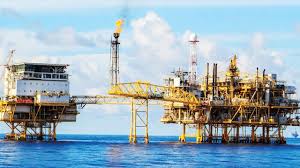Nigeria’s oil industry may soon experience a major turnaround, as six new offshore projects are expected to boost the country’s crude oil output by about 800,000 barrels per day (bpd). These projects are targeting deepwater reserves in the Gulf of Guinea that have remained untapped for years.
In recent years, Nigeria’s crude oil production has dropped significantly. By July 2025, output stood at around 1.5 million bpd, far below the 2.5 million bpd recorded in the past decade. Industry experts attribute the decline to years of low investment, operational challenges, and insecurity in many onshore oil-producing areas.
Now, the focus has shifted to offshore development, which is seen as safer and more stable compared to onshore fields. Key offshore locations such as Bonga North, Akpo West, Owowo, and Zababaza & Etan are at the centre of this new push.
The Nigerian Upstream Petroleum Regulatory Commission (NUPRC) is spearheading the strategy to unlock these resources. The agency is promoting a “cluster development” approach, where oil companies share existing offshore infrastructure instead of building entirely new platforms. This includes connecting smaller oilfields to already operational Floating Production, Storage and Offloading (FPSO) units. The model is expected to reduce project costs, speed up development timelines, and encourage more investment.
Oliver Kapson, an analyst with the African Energy Council, described the plan as a practical move that could help Nigeria tap billions of barrels in reserves, increase government revenue, and stabilise the economy.
The six major projects include:
- Bonga North: Operated by Shell Nigeria Exploration and Production Company (SNEPCo), this subsea tie-back to the existing Bonga FPSO is expected to add about 110,000 bpd to production. The final investment decision (FID) was approved in December 2024.
- Akpo West: Managed by TotalEnergies, this project will connect to the existing Akpo FPSO. Approved in February 2024, it is expected to produce about 14,000 bpd of high-value light condensate.
- Owowo Field: This ExxonMobil-led project, operated under Esso, will use one of the company’s FPSO facilities. Production is expected to reach around 150,000 bpd. Its development plan already has a positive FID.
- Zababaza & Etan: Operated by Nigerian Agip Exploration (NAE), this large-scale offshore development has the potential to produce about 150,000 bpd. It is still awaiting FID approval.
- Bonga South West/Aparo: A major joint venture between Shell and Chevron, this project could deliver as much as 190,000 bpd if approved. The FID is expected by 2027.
- Doro/Sehki/Nsiko/Bolia Cluster: This multi-company collaboration involving Chevron, Shell, and Allied Energies could produce about 135,000 bpd once approved.
According to NUPRC, these six projects could collectively meet the 800,000 bpd boost target. In addition, the commission aims to add another 810,000 bpd from other deepwater fields through a combination of cluster and nodal development.
The deepwater push comes at a time when Nigeria is seeking to restore its position as one of Africa’s leading oil producers. The new offshore model focuses on cooperation among companies, cost-sharing, and quicker delivery of projects, rather than the traditional approach of each operator building standalone infrastructure.
Industry experts note that the success of these projects will depend on steady investment flows, efficient project execution, and favourable regulatory conditions. With most of the fields located far offshore, the risk of pipeline vandalism and oil theft is significantly lower compared to onshore facilities.
If the projects are completed on schedule, Nigeria’s oil production could return closer to 2.5 million bpd in the coming years, improving export earnings and boosting foreign exchange reserves. This could also help the government fund critical infrastructure, social services, and debt repayments.
While the timeline for full implementation may stretch into the late 2020s, the announcement of these projects has already raised optimism in the oil and gas sector, with hopes that Nigeria can attract more global energy investments.
